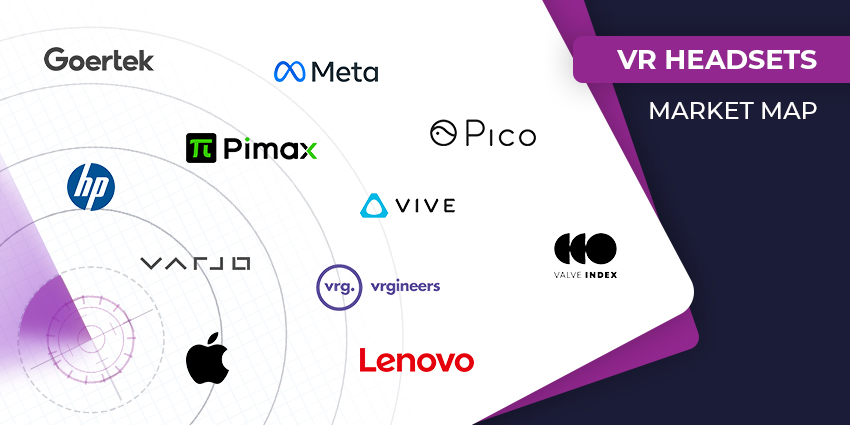In the debate on Web 2.0 vs Web 3.0, the former progressed rapidly since the 1990s, and today, it remains a crucial part of our lives, even ahead of Web 3.0’s rise. Users rely on phones, laptops, PCs, tablets, headsets, and wearables to access information daily on Web 2.0.
Web3 is the next generation of the internet. Developers and experts are building the space on decentralization, security, and ownership principles. Web3 uses blockchain technology to create a secure and transparent network that allows users to own their data and interact with each other without the need for intermediaries.
Web 3.0, XR, and 3D UGC
XR (extended reality) is a critical component of Web3, as it allows users to interact with the digital world more fully and realistically. XR technologies such as augmented reality (AR), virtual reality (VR), and mixed reality (MR) can create new and innovative experiences that are not possible on the traditional web.
For example, XR supports virtual worlds where users can interact with each other and digital objects. Enterprise end-users representing various end-users can leverage Web 3.0 services for multiple purposes, such as gaming, education, and training. XR can also overlay digital information in the real world, which can be used for navigation, shopping, and tourism tasks.
Moreover, Web 3.0 piggybacks from its predecessor’s user-generated content (UGC) landscape. The third generation of the internet looks to establish an enhanced ecosystem of 3D UGC following leading Web2 services like Instagram, Youtube, and TikTok.
For example, emerging Metaverse services claim to provide a space to support Web 3.0 UGC operations by providing SDK and content creation tools for distributing XR and immersive content. Moreover,
Rise of Web 3.0
Web 2.0 became popular in the mid-2000s with the rise of CSS, JavaScript, HTML file applications, and meteoric social media growth. Now, the world is on the cusp of another revolution.
Soon after Tim Berners-Lee invented Web 1.0, he suggested people could develop the Semantic Web.
Researchers studied the idea studied from the 1990s to the early 2000s. Berners-Lee later co-authored a Scientific American article suggesting the possibility of an internet based on semantic connections, known as Web 3.0.
Web 3.0 has four foundational pillars: semantic markup, blockchain and cryptocurrency, 3D visualization, and artificial intelligence. It is entirely different from the Web 2.0 internet experience while using the same devices and continuing to make information resources available to the world.
Here’s how Web 3.0 differs from and improves upon Web 2.0 technology:
Flat vs Spatial
Social interactions and connectivity are the most crucial features of Web 2.0. The platform’s output remains limited to a 2D desktop or laptop monitor, and information focuses on executing tasks.
Conversely, Web 3.0 uses semantic connections to link online assets to build meaningful content and relevant resources intuitively. Artificial intelligence (AI) and machine learning (ML) often power them.
Furthermore, Web 3.0’s spatial internet properties rely on immersive worlds connected via the web. These potentially interoperable worlds will provide information and services across XR platforms.
More importantly, users, including businesses, students, and professionals, can overlay digital content seamlessly in the real world. This creates a spatial relationship to data, allowing a persistent and always-on connection to the Internet.
Users can now merge and interact with content daily, interacting between the physical and virtual worlds in real-time. This contrasts sharply with Web 2.0, which users can only access with flat-screen monitors, televisions, smartphones, and watches.
Two vs Three Dimensions
Web 2.0 exists almost entirely in two dimensions, with most Web 2.0 assets rendered as 2D objects. In contrast, Web 3.0 combines 2D and 3D to create immersive user experiences. People can also access Web 3.0 using many devices, including smartphones, computers, and headsets.
Moreover, Web 3.0 3D experiences can be fully or partially transformative, with some services providing a fully immersive world accessible via headsets. Meanwhile, AR web 3.0 content places smaller assets in real-world locations.
Writable vs Executable
Web 1.0 first-generational capabilities merely provided information to users. Browsers could only read data on a static web page without interactivity or searchability.
Web 2.0 changed this by providing significant interactivity, where users could contribute to online knowledge without any technical understanding. They could also perform new interactions like searches, filtering results, making data entries, etc.
The executable phase of Web 3.0 will leverage AI and ML to create automated, bespoke, and interoperable user experiences. Moreover, a Web 3.0 experience can leverage real-time data monitoring, tracking, and immersion.
Web 2.0 vs Web 3.0: Final Comments
While Web 3.0 is a significant upgrade, a few key similarities remain. Firstly, the ultimate purpose of both is to help users access information. Also, all Web 2.0-compatible devices will support Web 3.0.
Many Web 3.0 platforms are now moving to low-code and no-code interfaces to expand and democratize 3D content creation.
Finally, essential technologies like CSS or HTML will remain relevant for web development. However, they will operate with C#, JavaScript, C++, and Java.
Although Web 3.0 is still very much in its infancy. Promises of 3D UGC services still require a foundation of technology, services, and talent to support the growth of Web 3.0. Moreover, the current Metaverse scrutiny is not helping the emerging space.
However, many brands are developing smartphone applications that use Web 3.0 to make an accessible route to the space. Without forcing users into cumbersome onboarding for Metaverse services.







